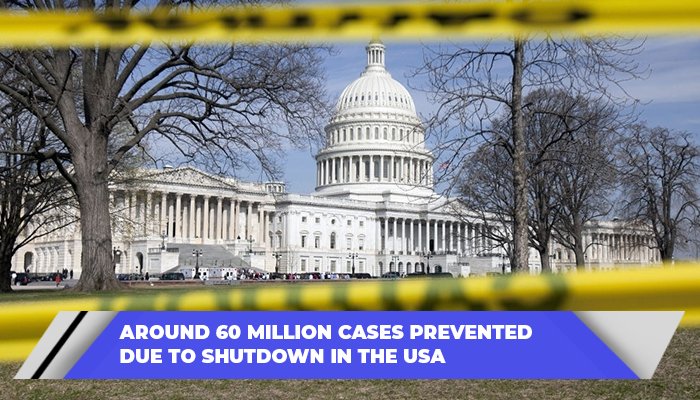Health News
Around 60 Million Cases Prevented Due To Shutdown In The USA

Studies published in a scientific journal on Monday found that shutdowns in the USA prevented approximately 60 million coronavirus cases. Another study conducted by epidemiologists at Imperial College London estimated the shutdowns saved about 3.1 million lives in 11 European countries, including 500,000 in the United Kingdom, and dropped infection rates by an average of 82 percent, sufficient to drive the contagion well below epidemic levels.
The study also shows that without certain policies, there would be:
- 285 million more total infections in China
- 38 million more total infections in South Korea
- 49 million more total infections in Italy
- 54 million more total infections in Iran
- 45 million more total infections in France
- 60 million more total infections in the United States
Contents
Around 60 Million Cases Prevented Due To Shutdown In The USA
Statewide lockdowns and social distancing restrictions avoided an additional 4.8 million confirmed coronavirus cases, which translates to about 60 million more infections. On Monday, John Hopkins University reported more than 1.9 million confirmed coronavirus cases and more than 110,000 deaths.

The studies analyzed 1,717 local, regional and national policies, including travel restrictions, the cancellation of events, the closing of schools, retail and religious gatherings, quarantines, and other emergency declarations, from early April. Dr. Kevin Dieckhaus, chief of infectious diseases at the University of Connecticut Health said that “They’re using economic growth as a proxy for interconnectedness, and it’s the interconnectedness that drives the epidemic”.
Does lockdown measures help to prevent the spread of the virus?
Even though the unprecedented shutdowns caused massive economic disruptions and job losses, they were effective at halting the exponential spread of the novel coronavirus. “The lockdown measures have served an important role in our society to prevent and mitigate the unabated spread of the virus probably saving many millions of lives in doing so.
We have yet to experience this particular novel coronavirus during a season when it’s usually most transmissible, and that’s a scary thought.
The idea with all these changes is to continue the economic activity but doing it in a way that doesn’t transmit the virus,” said Michael Mina, assistant professor of epidemiology at Harvard T.H. Chan School of Public Health.
Experts and scientists also opinioned that without these policies employed, we would have lived through a very different April and May. a team of University of California at Berkeley, under Solomon Hsiang, director of the Global Policy Laboratory at the University estimated that in the initial days after the virus was seeded in each country, and before the shutdowns, the number of infections was doubling every two days.
“The disease was spreading at a really extraordinary rate that is rare even among very infectious diseases. Global shutdowns helped in saving more lives in a shorter period of time than ever before.” On Monday, the total number of global Covid-19 cases surpassed 7 million, with over 400,000 dead.
Among that, more than a quarter of death occurred in the USA. from the beginning of the pandemic in January through April, there would be about 60 million more coronavirus infections in the USA alone and the aggressive measures and restrictions took by the government, controlled the spread of the virus.






















